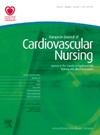植入式心脏设备(CIED)患者远程监护的主要护理模式
IF 3.9
3区 医学
Q2 CARDIAC & CARDIOVASCULAR SYSTEMS
引用次数: 0
摘要
导言 通过设备治疗心脏疾病导致 CIED 患者数量激增,他们需要更频繁、更仔细的检查,因此转诊到心脏刺激中心的患者数量和临床复杂性也随之增加。远程监控的使用不仅能持续获得有关设备性能的信息,还能持续获得有关心律失常和心力衰竭等临床事件的信息,而无需直接接触,从而大大减少了医院的访问次数,同时还能在短时间内及时发现任何需要干预的关键问题。正如我们多年来所看到的,远程监控的好处体现在经济、社会和临床等多个层面。材料和方法 大量研究表明,远程监护可以在不影响患者安全、减少资源消耗的情况下取代门诊检查,同时根据国际指南的建议,每年至少安排一次门诊随访。随着远程心电图和远程监护被引入临床实践,新的组织模式已经开始实施,它协调和规范了参与诊断和治疗过程的各专业人员的活动。这种模式必须保证角色和责任的精确界定、行动的可追溯性、护理的连续性、资源的低消耗、病人的满意度和接受度、与传统的医院和院外诊断和治疗路径的整合。初级护理模式是一个包含所有这些特点的模式。基础护理是一种以关系为基础、以资源为动力的护理服务体系,其基本要素包括:每个人都要承担个人决策责任;根据病例方法分配日常护理工作;人与人之间的直接交流;由专人对向病人提供的护理质量负责。分散决策方法基于三个基本概念:护士的决策权、责任和问责制。结果和结论 这种模式的真正核心是由一名护士负责决策。然后,每个病人都分配给一名负责连续性护理的护士,其职责包括病人和护理人员的教育和培训、网站数据录入、关键病例传输和评估的审查,以及向医生提交关键病例。本文章由计算机程序翻译,如有差异,请以英文原文为准。
The primary nursing model of remote monitoring in patients with implantable cardiac devices (CIED)
Introduction The treatment of cardiac pathologies with devices has led to an exponential increase in patients with CIED, who need more frequent, more careful check-ups, with a consequent increase in the number and clinical complexity of patients who refer to cardiac stimulation centers. Aim The use of remote monitoring makes it possible to have a continuous flow of information relating not only to the performance of the device but also to clinical events such as arrhythmias and heart failure without the need for direct contact, drastically reducing hospital accesses and at the same time promptly detecting any critical issues that require intervention in a more or less short time. The benefits of remote monitoring, as we have seen over the years, intervene at multiple levels, economic, social and clinical. Materials and methods Numerous studies have shown how remote monitoring can replace outpatient check-ups without compromising patient safety, reducing resource consumption, while scheduling at least one outpatient follow-up per year as recommended by international guidelines. With the introduction of telecardiology and remote monitoring in clinical practice, new organizational models have been implemented, which harmonize and codify the activity of the various professionals involved in the diagnostic and therapeutic process. This model must guarantee a precise definition of roles and responsibilities, traceability of actions, continuity of care, low consumption of resources, patient satisfaction and acceptance, integration with traditional hospital and out-of-hospital diagnosis and treatment pathways. A model that encompasses all these peculiar features is the PRIMARY NURSE MODEL. Primary nursing is a relationship based and resource driven system of care delivery, the building blocks are: attribution and acceptance by each individual of personal responsibility in making decisions; assignment of day to day care according to the case method; direct person to person communication; a person operationally responsible for the quality of care provided to patients. The decentralised decision making approach is based on three basic concepts: the nurse's decision making authority, responsibility and accountability. Results and conclusions The real CORE of this model is represented by the responsibility for the decisions made by a single nurse. Then each patient is assigned to a nurse responsible for continuity of care, whose duties include patient and caregiver education and training, website data entry, review of critical case transmissions and assessments, and submission of critical cases to the physician.
求助全文
通过发布文献求助,成功后即可免费获取论文全文。
去求助
来源期刊

European Journal of Cardiovascular Nursing
CARDIAC & CARDIOVASCULAR SYSTEMS-NURSING
CiteScore
5.10
自引率
10.30%
发文量
247
审稿时长
6-12 weeks
期刊介绍:
The peer-reviewed journal of the European Society of Cardiology’s Council on Cardiovascular Nursing and Allied Professions (CCNAP) covering the broad field of cardiovascular nursing including chronic and acute care, cardiac rehabilitation, primary and secondary prevention, heart failure, acute coronary syndromes, interventional cardiology, cardiac care, and vascular nursing.
 求助内容:
求助内容: 应助结果提醒方式:
应助结果提醒方式:


